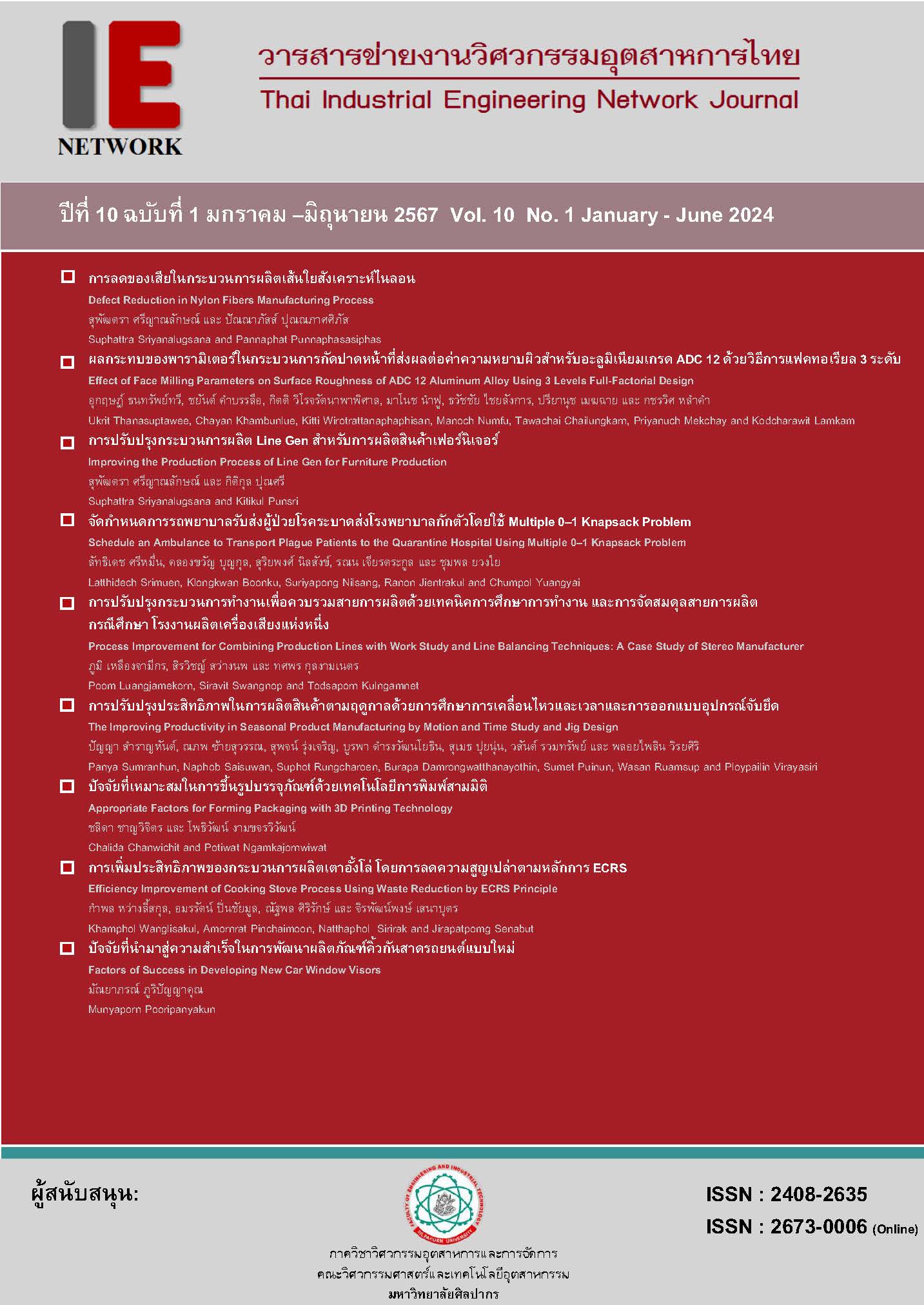Schedule an Ambulance to Transport Plague Patients to the Quarantine Hospital Using Multiple 0–1 Knapsack Problem
Main Article Content
Abstract
The outbreak of the novel coronavirus disease Corona 2019 (COVID-19) has been in Wuhan, China since November 2019 and has spread to more than 160 countries around the world. As a result, the need to call for ambulances has increased from the incident. Found that there are many patients who do not have an ambulance to pick them up after finding themselves with symptoms similar to the new coronavirus disease Corona 2019 (COVID-19). It should find ways to improve the ambulance system to be able to respond to future epidemic incidents. Therefore, this study proposes the scheduling of epidemic patient transfers to quarantine hospitals for handling potential future epidemics using multiple 0–1 knapsack problem in scheduling simulations. An ambulance to transport the patient to the hospital for quarantine. By scheduling an ambulance, the goal is to maximize the effectiveness of prioritizing patients in relation to their health status.
Article Details

This work is licensed under a Creative Commons Attribution-NonCommercial-NoDerivatives 4.0 International License.
บทความ ข้อมูล เนื้อหา รูปภาพ ฯลฯ ที่ได้รับการตีพิมพ์ในวารสารฯ ถือเป็นลิขสิทธิ์ของวารสารฯ หากบุคคลหรือหน่วยงานใดต้องการนำทั้งหมดหรือส่วนหนึ่งส่วนใดไปเผยแพร่ต่อหรือเพื่อกระทำการใดๆ จะได้รับอนุญาต แต่ห้ามนำไปใช้เพื่่อประโยชน์ทางธุรกิจ และห้ามดัดแปลง
References
สถาบันการแพทย์ฉุกเฉินแห่งชาติ, “คู่มือแนวทางปฏิบัติของชุดปฏิบัติการฉุกเฉินพิเศษ Special COVID-19 Operation Team: SCOT.” Mar. 30, 2020. Accessed: Dec. 19, 2021. [Online]. Available: https://www.niems.go.th/1/UploadAttachFile/2020/EBook/49836_20200404172855.pdf
J. Black, “Ambulance Services Working Collaboratively with Community Partners.” 2017. [Online].Available: https://www.kingsfund.org.uk/sites/default/files/2017-11/John%20Black%2031.101.17%20pdf_1.pdf
G. Erdoğan, E. Erkut, A. Ingolfsson, and G. Laporte, “Scheduling ambulance crews for maximum coverage,” The Journal of the Operational Research Society, vol. 61, no. 4, pp. 543–550, 2010.
N. Lurkittikul and O. Kittithreerapronchai, “Multi-Criteria Knapsack Problem for Disease Selection in an Observation Ward,” IOP Conf. Ser.: Mater. Sci. Eng., vol. 58, p. 012017, Jun. 2014, doi: 10.1088/1757-899X/58/1/012017.
N. Kumaraguruparan, H. Sivaramakrishnan, and S. S. Sapatnekar, “Residential task scheduling under dynamic pricing using the multiple knapsack method,” in 2012 IEEE PES Innovative Smart Grid Technologies (ISGT), Washington, DC, USA, Jan. 2012, pp. 1–6. doi: 10.1109/ISGT.2012.6175656.
S. A. Hassan, P. Agrawal, T. Ganesh, and A. W. Mohamed, “Scheduling shuttle ambulance vehicles for COVID-19 quarantine cases, a multi-objective multiple 0–1 knapsack model with a novel Discrete Binary Gaining-Sharing knowledge-based optimization algorithm,” in Data Science for COVID-19, Elsevier, 2021, pp. 675–698. doi: 10.1016/B978-0-12-824536-1.00034-4.

